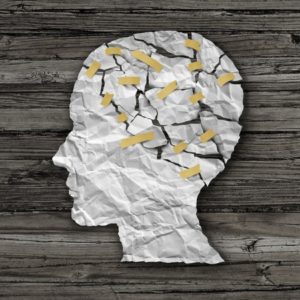Misrepresentation in Biological Psychiatry

An intriguing article, “Medicine and the Mind,” by psychiatrists Caleb Gardner and Arthur Kleinman was published in The New England Medical Journal in October of 2019. They said that something has gone wrong with academic and clinical psychiatry. “Checklist-style amalgamations of symptoms have taken the place of thoughtful diagnosis, and trial-and-error ‘medication management’ has taken over practice to an alarming degree.” While facing less and less time to work with patients, they thought psychiatry was facing the “stark limitations” of biologic treatments.
While these limitations are widely recognized by experts in the field, the dominant message to the public—and the rest of medicine—continues to be that the solution to psychological problems means making the correct diagnosis and then matching it with the right medication. As a result, psychiatric diagnoses and medications flourish in the name of scientific medicine. Yet, “there is no comprehensive biologic understanding of either the causes or the treatments of psychiatric disorders.”
Psychiatry is plagued with three things, according to Gardner and Kleinman. First is the over-prescription of medications for a large segment of the population. Second, there has been the abandonment and incarceration of individuals with chronic, severe mental illness. Third, diagnostic systems have become increasingly unwieldy with their overlapping checklists of symptoms.
The problem is not simply one of scientific and intellectual integrity. This state of affairs influences training and reimbursement and does a great disservice to patients, practicing psychiatrists, and our medical colleagues who are striving to provide the best and most humane care to people with medically and psychologically complicated conditions.
Psychiatry should be uniquely positioned to help through example, scholarship and consultation. “Yet the field seems to have largely abandoned its social, interpersonal, and psychodynamic foundations, with little to show for these sacrifices.” Science historian Anne Harrington proposed that psychiatry limit its scope to only severe, mostly psychotic disorders. In her 2019 book, Mind Fixers, she said, “Today one is hard-pressed to find anyone knowledgeable who believes that the so-called biological revolution of the 1980s made good on most or even any of its therapeutic and scientific promises.”
We believe that a fundamental rethinking of psychiatric knowledge creation and training is in order. If only the highest-quality biologic research were supported, substantial funding could be redirected to psychosocial, cultural, public health, and community studies that directly support the work of practicing psychiatrists responding to the needs of patients, families, and communities. The most pressing work is research on addiction, elder care, community care programs, consultation aimed at improving the quality of care in medical clinics and hospitals, child and adolescent psychiatry, and global mental health, as well as cultural studies of vulnerable populations.
Misrepresenting the Truth
In “Messaging in Biological Psychiatry” for the Harvard Review of Psychiatry, researchers Estelle Dumas-Mallet and Francois Gonon noted the article by Gardner and Kleiman was the first time that psychiatrists acknowledged in a prestigious biomedical journal that they have been misrepresenting the truth of biological psychiatry to their non-psychiatric peers in medicine and to laypeople. Dumas-Mallet and Gonon believe that most psychiatrists do not intentionally deceive patients or the public. They are not aware they contribute to the doublespeak or recognize how they passively accept it. “Therefore, in the absence of convincing evidence supported by observational studies, they might miss Gardner and Kleinman’s important message.”
In their article, Dumas-Mallet and Gonon sought to review the academic literature that described the misrepresentation of biological psychiatry, what its sources were, how it is diffused through mass media, and what the social consequences have been. As documented in several academic studies, there is often a huge gap between the observations reported in biomedical publications and their presentation in mass media. Focusing on psychiatry, they described the misrepresentations of the scientific observations in the biomedical literature that were spread through the media. They reviewed academic works that examined how mass media covered biomedical research. Lastly, they discussed the possible reasons why journalists, scientists, and scientific institutions “contribute to the misrepresentation of biological psychiatry.”
The percentage of scientific articles that confirmed researchers’ initial hypotheses increased from 70% in 1990 to 86% in 2007. Dumas-Mallet and Gonon thought the preferential publication of positive biomedical findings could be the result of two tendencies. First, researchers could choose to not publish their negative results. Second, journal editors have increasingly rejected articles reporting negative findings. These tendencies can be illustrated by looking at how clinical trials reporting a beneficial effect to the FDA are more often published than those reporting no effect.
Among a total of 74 randomized, controlled trials of antidepressants registered with the FDA, 37 of the 38 trials reporting a positive effect were published in peer-reviewed journals. By contrast, among the 36 trials judged as negative by the FDA, 22 had not been published, 11 were published but reported positive outcomes, and only 3 trials published results in agreement with the FDA’s judgments.
Many articles reporting a correlational relationship between a pathology and a risk factor improperly suggested it to be causative. When this wrong interpretation is reported in press releases of the research, it is likely to appear in media reports covering the study. They gave an example with a brain-imaging study that said a link between brain abnormalities and ADHD confirmed that ADHD was a brain disorder. The authors themselves acknowledged that “structural changes in certain brain areas are not necessarily the cause of mental disorders.” A large international study suggested the modest atrophy of the hippocampus could be the result of chronic depression rather than the cause.
Since positive findings are preferentially published in biomedical journals, the first study on a new subject often reports a larger effect size than subsequent studies. Dumas-Mallet and Gonon conducted a large comparative study of initial studies. They found that an average of one in two initial studies was either contradicted or significantly weakened by the corresponding meta-analysis. They observed how the public was seldom informed of research that disproved initial studies. In a second illustration, they said “only 4 of 50 newspapers covering a story on genetic susceptibility to depression also reported a later meta-analysis that disconfirmed its results.”
This example illustrates a general observation: newspapers strongly favor studies published by prestigious scientific journals, even though the initial studies that they publish are as often disconfirmed by subsequent studies, as are the initial studies published by journals with lower impact factors. Newspapers preferentially cover these initial studies because these prestigious journals also produce press releases highlighting the studies they publish. Indeed, these press releases are the direct source of more than 80% of the press articles reporting biomedical findings.Moreover, most newspaper articles are very closely inspired by these press releases and take up their biases and exaggerations without criticism. Finally, newspapers further accentuate publication biases by almost exclusively covering studies reporting a positive effect.
Misrepresenting the results of biological psychiatry to the public reinforces the view that mental disorders are biomedical diseases. The percentage of Americans who believe that schizophrenia and depression are genetic brain diseases increased from 61% in 1996 to 71% in 2006. Patients that hold this view are more pessimistic about their recovery and focus their hopes on psychotropic medications. While it needs further investigation, some studies show that patients with less endorsement of biogenetic beliefs about depression appear more likely to recover, while other studies find no relationship.
Possible Causes
A scientist’s career primarily depends on the number and quality of their publications. Getting a study published in a prestigious journal ensures the author a lasting reputation, and increases the likelihood their grant applications will be funded. In order to gain publication in a prestigious journal like The Lancet or The New England Medical Journal, researchers may be tempted to exaggerate the interest of their work. On the publication side, editors of prestigious journals will select the most exciting results likely to interest a large audience. “In fact, mass media preferentially cover studies published by prestigious journals because they believe them to be the most reliable, although many of them are disconfirmed by subsequent studies.”
Scientific institutions favor researchers who publish in prestigious journals. They also encourage researchers to communicate with journalists and the public. Institutions have also strengthened their press services and are flooding national journalists with press releases. National newspapers also seem to preferentially cover biomedical publications whose authors are working in that nation. Since research is mainly funded on project-based proposals, researchers are encouraged to over-promise in their grant applications, and then to embellish their results in order to continue receiving grants.
Journalists may unwittingly worsen the distortions already present in the biomedical literature. Biomedical observations in scientific publications are frequently altered by different forms of distortion, including: partially falsified results, data spin or embellishment, improper interpretation, exaggerated conclusions. Press releases by biomedical journals and scientific institutions often aggravate these distortions. While journalists are not the main source of these distortions, they boost their distribution by preferentially covering initial studies and those reporting positive results. “Consequently, the journalistic ideal of independent and objective investigation of the facts seems to apply poorly to the media coverage of biomedical findings.”
All these observations illustrate why mass media almost never informs the public when a study they covered is contradicted by subsequent studies. To illustrate this, Dumas-Mallet and Gonon pointed to Caspi et al, “Influence of Life Stress on Depression,” where the authors suggested there was a genetic susceptibility to depression. This was covered by 50 newspapers during the week after its publication. Yet when later studies contradicted Caspi et al, there was essentially no media attention. “Only four newspapers covered the meta-analysis published in 2009.” They concluded that the psychosocial understanding of mental disorders was at least as important as the biological one to guide mental health professionals.
Dumas-Mallet and Ganon told Mad in America they were motivated to write their article because they were seeing signals that academic psychiatry was prepared to reflect on these misrepresentations and change course (See “If Not Psychiatry, What Then?”). They affirmed there is a doublespeak done with biological psychiatry that negatively effects patient care. The publication of the Gardner and Kleinman article prompted them to write theirs. “For the first time in a prestigious medical journal, the doublespeak of psychiatry was acknowledged.” The Mad in America author, Emaline Friedman, said:
The existing literature makes a compelling case that a psycho-social understanding of mental disorders is at least as important as a neuro-biological understanding. Such a shift in the dominant narrative has the potential to influence mental health treatments as well as the mental health literacy of the public, which impacts how mental health patients are treated by those around them.





